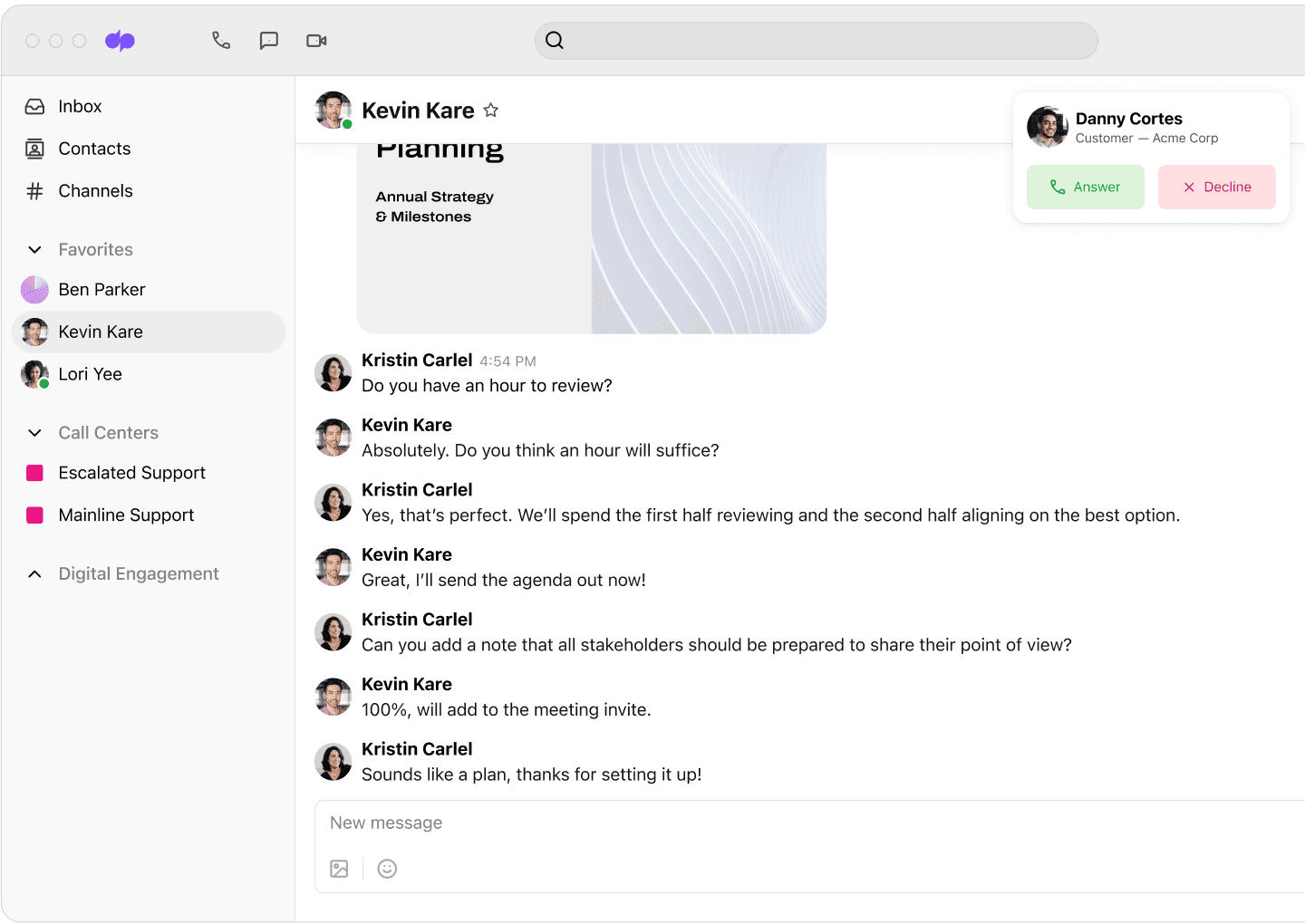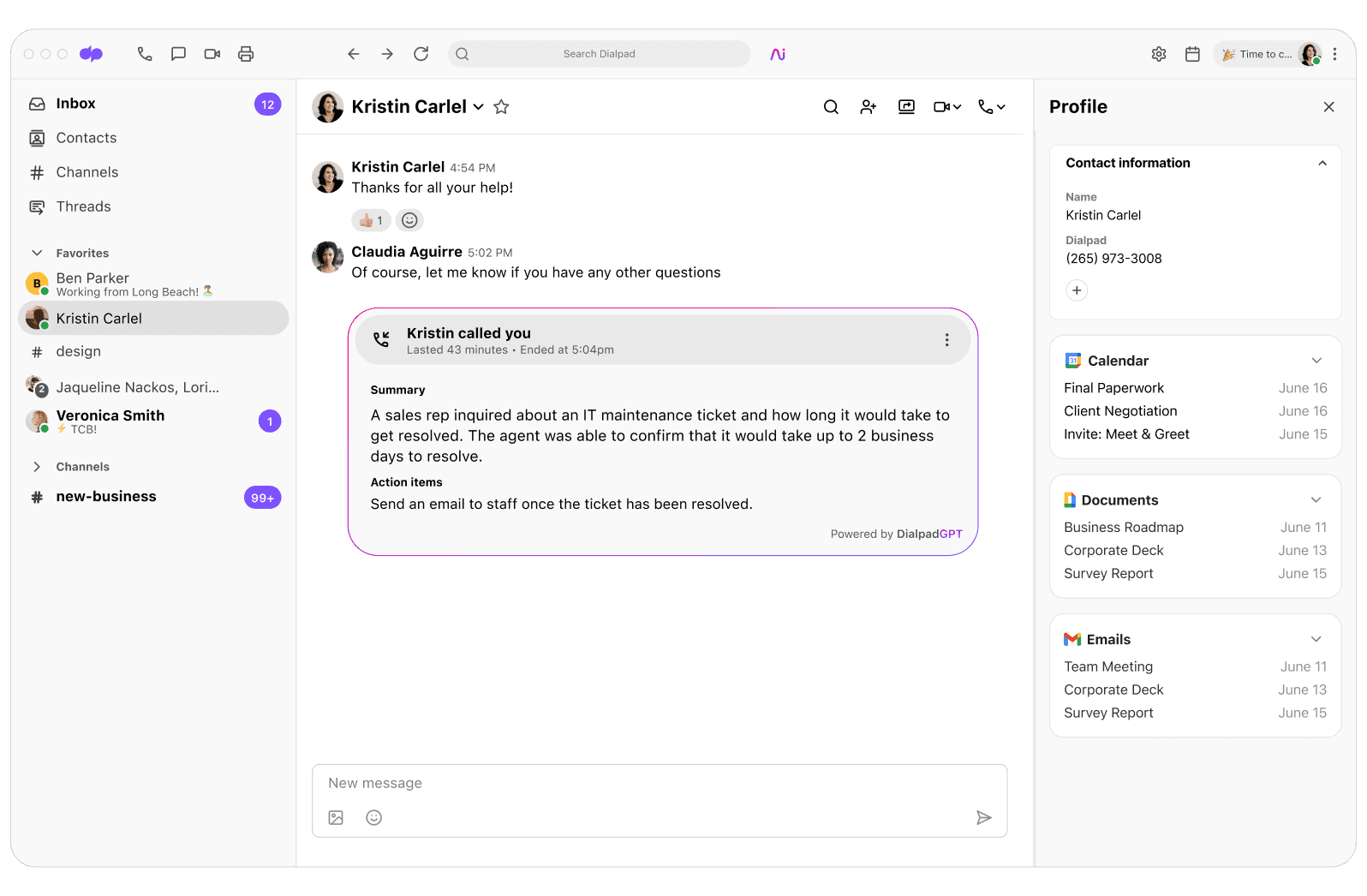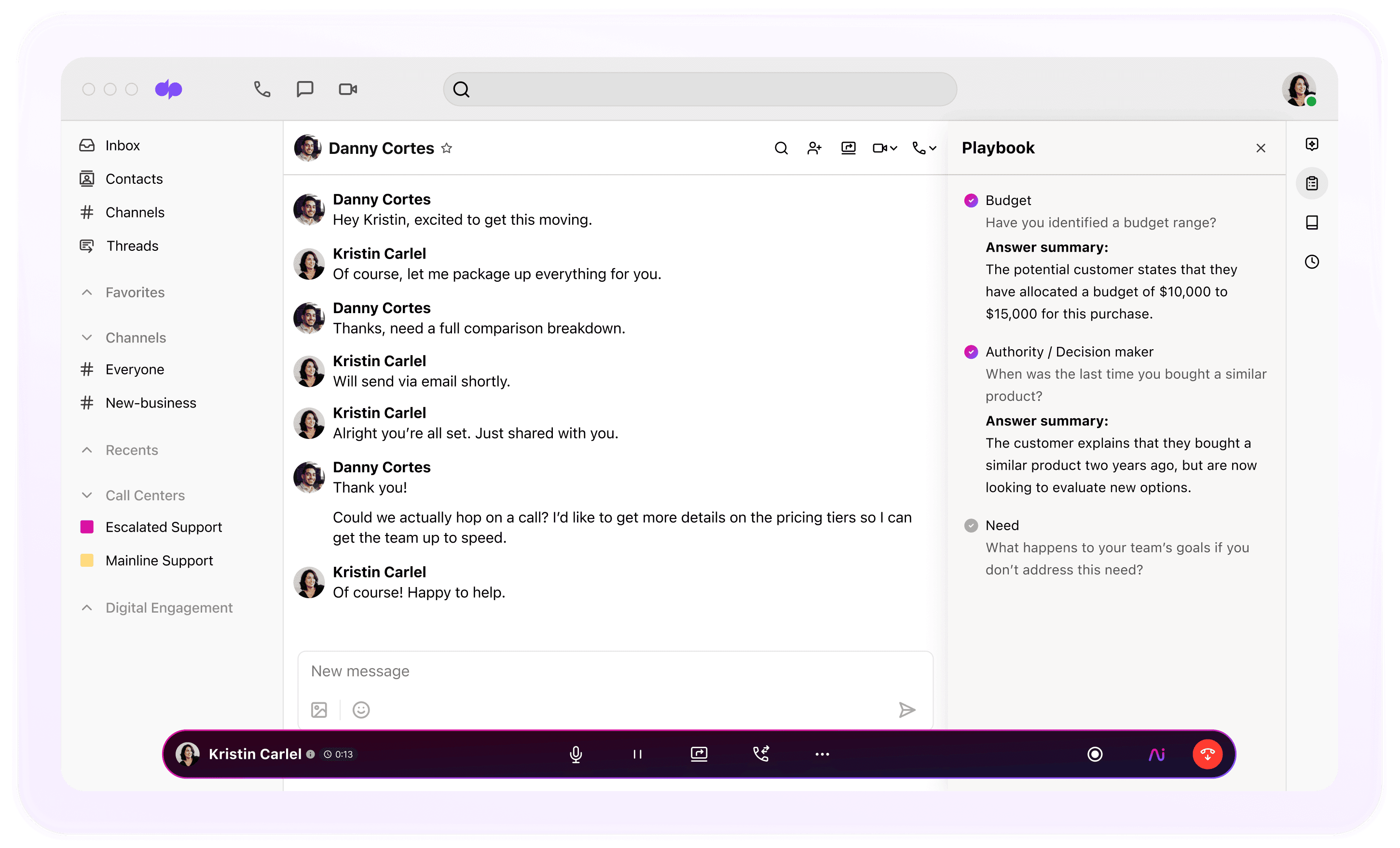Mutual action plan: MAP out your route to shorter sales cycles

Senior Content Marketing Manager

Tags
Share
For even the best sales reps, talent and skill are only part of successfully booking meetings and winning deals.
To achieve consistent sales outcomes and hit your number quarter after quarter, success also hinges on clear communication, shared goals, and good strategic planning. This is especially true in complex sales processes where multiple stakeholders are involved and reps have to juggle not only pitching the product and handling objections, but also doing the work of a project manager (managing deadlines, aligning everyone's expectations, and so on).
One powerful asset that facilitates this alignment is the mutual action plan (MAP). In this blog post, we’ll explore why mutual action plans are so beneficial, how to create one, and tools that’ll help your sales team build and execute their MAPs.
But first, let’s look at what a mutual action plan is.
What is a mutual action plan?
A sales mutual action plan (MAP) is a collaborative document that outlines the steps, responsibilities, and timelines agreed upon by both the sales team and the buyer or buying committee.
It’s a great sales enablement tool and basically serves as a roadmap that guides both parties through the sales process, making sure that everyone is on the same page and working towards the same goals. The higher the ACV (average contract value) of what you’re selling and the longer the sales cycle, the more important MAPs are, because they help clarify expectations, streamline communication, and prevent misunderstandings that can derail a sale.
Why mutual action plans work for both sales teams and buyers
Used correctly, MAPs are beneficial for not only your sellers, but also your prospective customers. Here’s why.
1. It improves communication between all stakeholder groups
A MAP is vital to open and transparent communication between the sales team and the buyer.
By clearly outlining each step of the process, both parties can easily track progress, address any objections or concerns, and make informed decisions without a ton of needless back and forth. As a secondary benefit, this level of transparency and communication also helps build trust and strengthens the relationship between your company and your customers.
2. It aligns everyone on goals and expectations
When sales teams and buyers collaborate using a MAP, it ensures that everyone is aligned on goals and expectations. (For example, if your prospect’s buying committee includes representatives from the Marketing, Finance, and Legal team, they might each have very different goals for buying your software.)
A MAP-based alignment helps prevent any surprises or misunderstandings that could arise during the sales process. Even when there’s complicated multithreading involved, everyone knows what to expect and it empowers your sellers to work more effectively to address everyone’s objectives and proactively cover all their bases.
3. It improves accountability
One of the biggest benefits of a MAP is it lets you assign specific tasks and deadlines to both the sales team and the buyers.
This accountability ensures that everyone involved is aware of their responsibilities and can meet their deadlines. More often than not, your customers are busy and have a lot going on—sending your sales rep documents and filling out paperwork aren’t going to be at the top of their to-do list.
This structured approach helps to keep the sales process on track and can significantly increase the likelihood of closing a deal while reducing the amount of “nudging” and follow-ups your reps have to do.
How to create and follow a mutual action plan + software that can help along the way
Now, let’s look at a step by step guide to creating a MAP and some useful mutual action plan tools your sales team can leverage.
1. Initiate the plan
Start by discussing the concept of a MAP with your buyer and get their buy-in agreement to participate in creating the plan. Maybe start off with some mutual action plan examples. This is arguably the most important step, because if your prospect isn’t bought in, they’re not going to do the tasks the MAP requires of them in later steps.
Help your prospects see the benefit of a MAP—and leverage their own internal requirements and urgency to do this. Maybe they need to use their budget by a certain deadline or the executive team is pushing on switching to your product or service. This, combined with the power of a MAP to keep things on track, can be a helpful push to make sure your prospects stick to the plan.
If you have a remote sales team, video calls are typically the best way to set up meetings and communicate throughout the sales journey. A unified communications or cloud collaboration software like Dialpad is crucial because it’ll let them communicate with prospects (and internally) through any channel—phone calls, texting, and video conferencing—all from a single app:

The best thing is, your prospects don’t have to download anything to join a video call. All they have to do is click a button to join the call from a web browser.
2. Define your objectives
Once you’ve gotten buy-in from your prospect, clearly outline the objectives of the plan and make sure to include the desired outcomes for both parties.
This is where a real-time transcription and/or call recording feature will be useful because your sellers will be able to go back after and make sure they’ve logged the objectives for everyone.
Dialpad’s Ai transcription feature transcribes sales calls in real time, and the Ai Recap feature saves our reps a lot of time by capturing key points and defining the objectives and next steps for every call:

3. List the key milestones and responsibilities
Next, reps should identify the key milestones and deadlines for this sales process, and the tasks required to achieve each milestone.
Again, this used to involve a lot of manual note-taking, but sales AI tools can take these tasks off reps’ plates and save them hours every week.
Dialpad’s Ai Recap feature highlights tasks and who they were assigned to on the calls so you can quickly see who has to do what, by when.
We also use Ai Playbooks, which come in handy, especially when we have greener reps working a deal. Ai Playbooks are a Dialpad Ai tool that tracks rep adherence to specific requirements.
For example, you could have a playbook based on a sales methodology (like BANT, SPIN, or SPICED). The Ai Playbook will then help reps by showing them which tasks are required by your methodology during sales calls, and also tracks whether reps follow the tasks required by that playbook:

In this case, you could have a custom playbook that lists the key milestones in the MAP, which will then show your reps the milestones that they need to walk the prospect through so that everyone is aware of dates and to-dos.
4. Establish communication channels
To ensure that messages don’t get missed and everyone is using the same channels to ask questions, your MAP should also outline how and when you will communicate updates and address any issues that arise.
Email chains often get lost or missed in cluttered inboxes, and even though they’re important for keeping a paper trail for your reps’ communications, it’s good to have a more immediate alternative that gets responses quickly.
For example, your MAP might highlight that important contracts and documents will be sent over email, progress updates will be sent over the group messaging thread, and questions can be asked there as well (or over text or the phone).
The trickiest part of this is that reps often have to juggle many different apps to manage all these conversations, which adds to the issue of important messages sometimes getting lost in the shuffle.
Our team uses Dialpad to handle all of these communications—whether they’re voice calls, video conferencing, or messaging. It all happens in one app, which makes our sellers’ lives a lot easier.
5. Review and revise
Regularly review your mutual action plan with your buyers to make sure it remains relevant and that you’re making any necessary adjustments along the way. Plans change all the time, and even though reps can’t prevent these changes from happening, they should be documenting them.
This is another benefit of call recording and transcription—reps don’t have to rely on their memory or be diligent note-takers. Your team will always have detailed records of sales conversations, making it easier to track progress and make updates to the plan.
From a manager’s perspective, this is also a good opportunity to review reps’ performance during this process. Are they touching on all the required points in your MAP? Did they talk about deadlines and next steps? AI can be extremely helpful here too—we use Ai Scorecards to instantly analyze sales calls and suggest to coaches whether an action was done. It can save us hours of QA time, and coaches can override the AI’s suggestions if needed:

Even though there are a ton of benefits to MAPs, there are still hurdles to overcome when implementing them. Here are a few, along with suggested solutions based on our sellers’ experiences:
1. Lack of buy-In
One of the most significant hurdles in implementing a mutual action plan is gaining full buy-in from all parties involved. If either your sales team or prospect is not committed to the MAP, it can lead to a lack of effort in following the plan, which ultimately undermines its effectiveness.
Solutions:
Communicate the benefits: Clearly articulate the advantages of using a MAP, such as improved communication, better alignment of goals, and increased accountability. Make sure your prospect understands how it benefits them specifically.
Involve key stakeholders early: Engage key stakeholders from both sides in the initial discussions about the MAP—their early involvement can help build a sense of ownership and commitment.
Showcase success stories: Share examples of successful implementations of MAPs to prove their value and effectiveness. To make these more relevant to your prospects, try to tailor the examples to their industry and/or company size.
2. Miscommunication or lack of communication
Miscommunication between your sellers and buyers can lead to misunderstandings, missed deadlines, and frustration. This can be especially problematic if your MAP is not regularly updated or if communication channels are unclear.
Solutions:
Schedule regular check-Ins: Set up recurring meetings or check-ins to review the progress of the MAP, discuss any issues, and make adjustments if needed to keep everyone aligned and informed.
Use AI coaching to help reps on live calls: It’s not realistic for sales managers to coach every single rep on calls, but AI assist features can automate this process. For example, when certain keywords are spoken on a call (such as “action plan” or “next steps”), Dialpad’s Ai Assist can automatically pop up helpful notes for reps to remind them to ask certain questions or communicate expectations. This can significantly improve communication and reduce human error, without adding strain or more work for coaches.
Document everything: Maintain detailed records of all communications, decisions, and updates related to the MAP to have evidence for changes or in case there are disputes during the sales process.
3. Unforeseen obstacles
Unexpected challenges or obstacles can and will come up during the sales process—especially if you have long or complex enterprise sales cycles—which can derail the progress of the MAP. These obstacles include everything from changes in buyer priorities, internal team changes, or external factors such as market conditions.
Solutions:
Build in extra time: Design your MAP with some flexibility to accommodate unforeseen changes. This might include buffer times for key milestones or contingency plans for critical tasks.
Manage risks proactively: Identify potential risks at the outset and develop strategies to mitigate them. Regularly assess these risks throughout the sales process and adjust the MAP as needed.
Stay agile: Make sure reps are prepared to pivot and adapt quickly to new circumstances. Encourage a mindset of agility within your team and with the buyer to handle changes effectively.
4. Inconsistent follow-up
Ensuring consistent follow-through on tasks and deadlines can be difficult, especially when your reps are juggling multiple deals and responsibilities. This inconsistency can lead to delays and hurt trust between you and your prospects.
Solutions:
Set realistic deadlines: When assigning tasks and setting deadlines, make sure that they’re realistic and take into account the workload of everyone involved.
Use reminders and notifications: Use your calendar or project management software to set up automated reminders and notifications for upcoming tasks and deadlines. This helps keep everyone on track. (Dialpad integrates with both Google Calendar and Microsoft Outlook to make it easy for reps to organize, schedule, and modify meetings with clients.)
Hold each other accountable: Foster a culture of accountability by regularly reviewing progress and addressing any lapses in follow-through promptly. Having objective coaching and performance analysis tools like scorecards and transcripts, can be super helpful to provide reps with constructive critiques.
Do your reps have mutual action plans?
A mutual action plan is a powerful tool that can significantly enhance your sales process by improving communication, aligning goals, and increasing accountability.
With a well-structured MAP, your sales teams and prospects can work together more effectively, overcome challenges, and ultimately start the customer relationship off on the right foot.
Take a product tour of Dialpad Ai Sales to see how sales teams are leveraging our unique AI features to ensure smooth execution and follow-through of MAPs throughout the sales journey!








